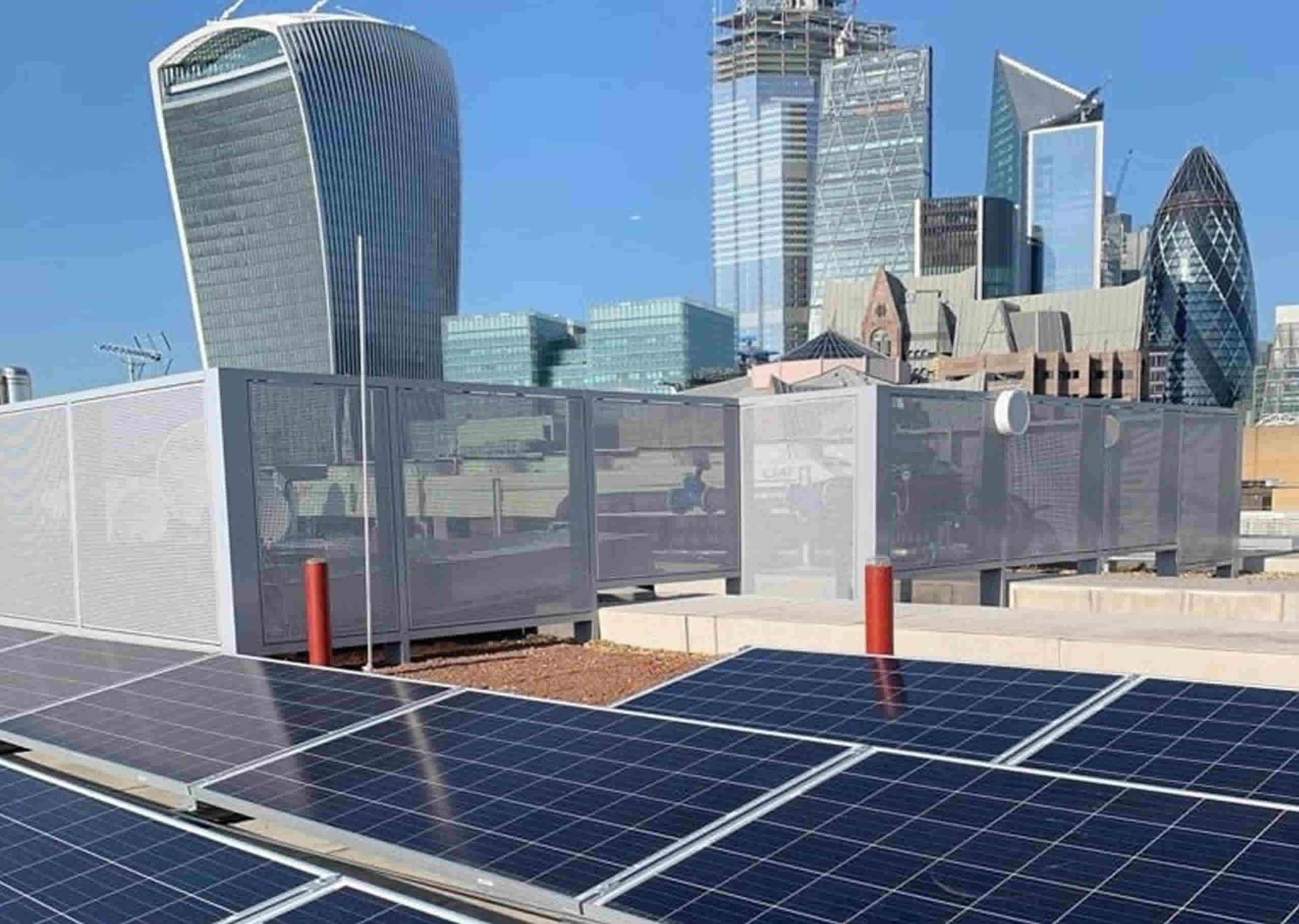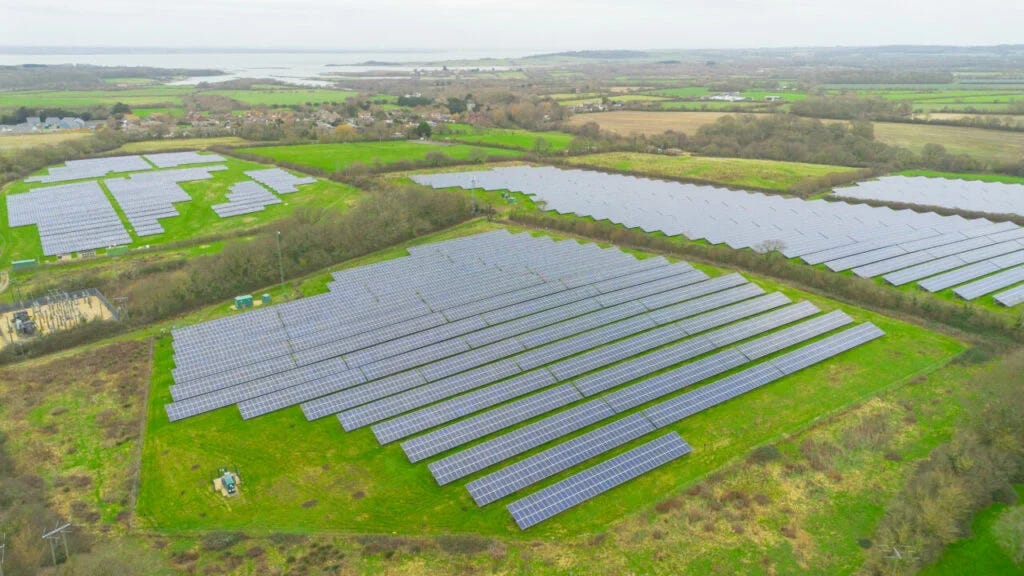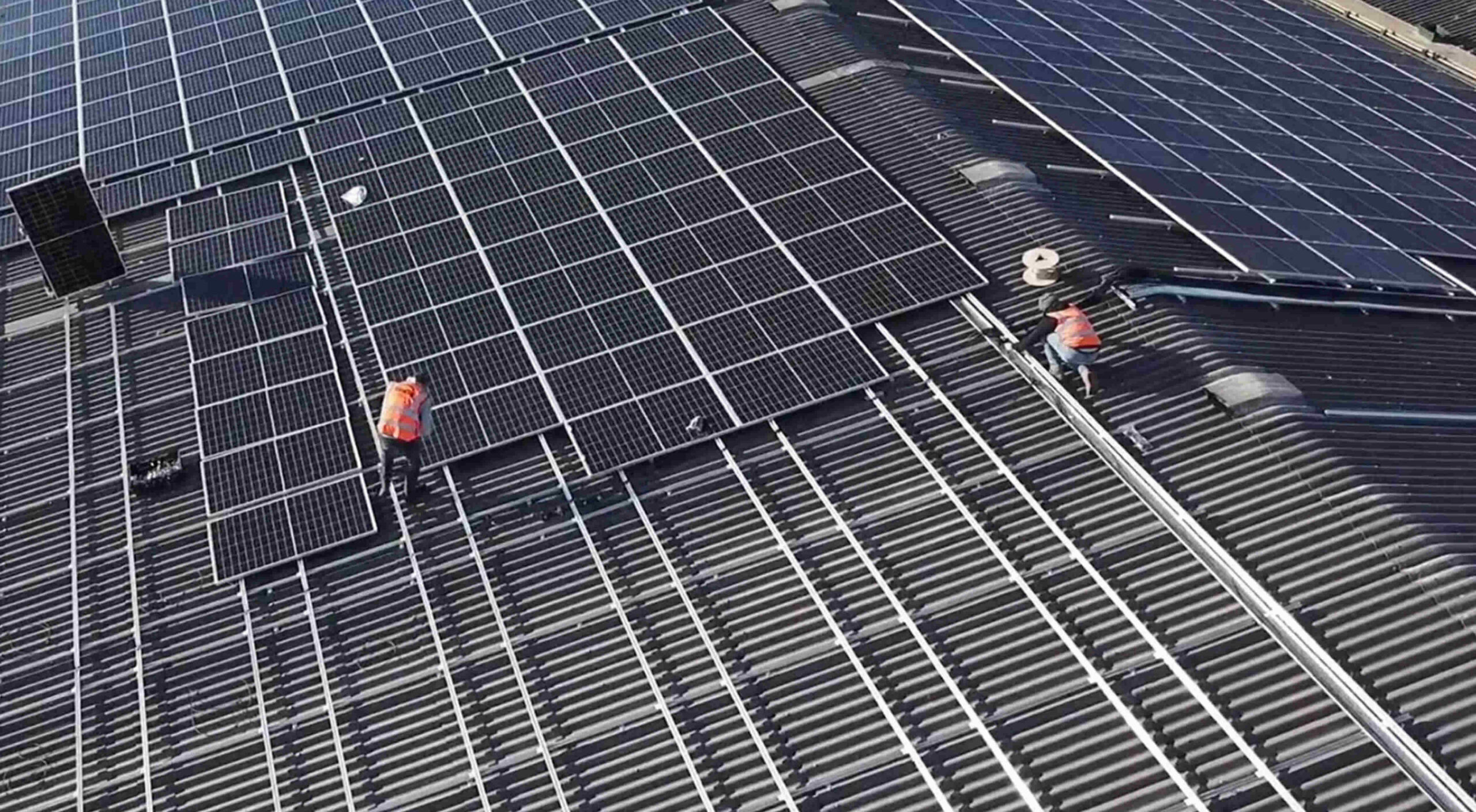LONDON – In the heart of the City of London, where skyscrapers pierce the skyline and financial deals power the economy, a new study suggests the real power lies overhead. Business rooftops across the Square Mile could generate enough solar energy to meet local household demands more than 31 times over, according to fresh analysis from energy giant E.ON UK. This revelation comes at a pivotal moment for the capital, as the UK accelerates its push towards net zero emissions, with solar installations booming nationwide in 2025.
The study, which examined commercial roof spaces in towns and cities across the UK, paints a picture of untapped potential that could revolutionize how we think about energy production. If every business in the City of London installed solar panels, the generated electricity would equate to a staggering 3,148% of household energy needs – that’s 757,824,800 kWh annually, far surpassing the requirements of the area’s 8,915 homes. Even more remarkably, only 0.08% of this output would be needed to keep every streetlight aglow, leaving vast surpluses for other uses like community sharing or grid support.
This isn’t just a London story, though the capital dominates the rankings. Hammersmith & Fulham ranks second, with potential to cover 1,221% of its 91,699 households’ energy demands through business solar. Islington, another inner London borough, comes in seventh at 645%, while Camden sits at 13th with 510%. These figures highlight how densely packed urban areas, often seen as challenging for renewables due to space constraints, could actually lead the charge in sustainable energy.

The Study: Crunching the Numbers on Rooftop Revolution
E.ON’s energy experts delved into data from 86 types of businesses across 15 sectors, including retail, manufacturing, hospitality, and professional services. They calculated solar yield based on total commercial roof area, applying a conservative conversion factor of about 125 kWh per square metre – adjusted down from a median of 188 kWh to account for unsuitable buildings and regional sunlight variations. This was benchmarked against average household consumption of 2,700 kWh per year, per Ofgem data, and streetlighting demands of roughly 290 kWh per lamp annually, sourced from a 2020 CIHT survey.
The results are eye-opening. Nationwide, if all business rooftops were solar-equipped, the UK could power every household and still have capacity for essential infrastructure like lighting. The top 15 areas showcase a mix of urban and industrial hubs:
| Rank | Town/City | Homes in Region | Total Solar Yield (kWh) | Percentage of Solar Needed for Streetlights | Percentage of Homes Powered |
|---|---|---|---|---|---|
| 1 | City of London | 8,915 | 757,824,800 | 0.08% | 3,148% |
| 2 | Hammersmith & Fulham | 91,699 | 3,023,309,000 | 0.01% | 1,221% |
| 3 | Thurrock | 65,391 | 2,136,759,000 | 0.02% | 1,210% |
| 4 | Gateshead | 94,705 | 2,674,048,000 | 0.01% | 1,046% |
| 5 | Luton | 79,662 | 1,541,612,000 | 0.02% | 717% |
| 6 | Trafford | 99,443 | 1,911,574,000 | 0.01% | 712% |
| 7 | Islington | 111,855 | 1,947,958,000 | 0.01% | 645% |
| 8 | Milton Keynes | 119,543 | 1,893,038,000 | 0.01% | 587% |
| 9 | Dudley | 138,526 | 2,187,863,000 | 0.01% | 585% |
| 10 | Telford & Wrekin | 82,261 | 1,295,798,000 | 0.01% | 583% |
| 11 | Hillingdon | 109,524 | 1,676,913,000 | 0.01% | 567% |
| 12 | Leicester | 141,351 | 2,069,741,000 | 0.01% | 542% |
| 13 | Camden | 117,457 | 1,616,949,000 | 0.01% | 510% |
| 14 | Peterborough | 88,558 | 1,179,903,000 | 0.01% | 493% |
| 15 | Renfrewshire | 90,186 | 1,185,065,000 | 0.01% | 487% |
In the City of London, manufacturing sites account for 16.9% of premises, followed by information and communication at 11.8%, and professional services at 10.1%. These sectors, with their often expansive flat roofs, are prime candidates for solar arrays. Hammersmith & Fulham and Thurrock follow closely, each capable of generating around 12 times local demand, underscoring the role of mixed-use areas in energy independence.

For Londoners, this means a potential shift from reliance on distant power plants to localized, clean energy. “The energy transition is about making energy more affordable and sustainable,” said an E.ON spokesperson. “Through our commitment to leading the transition to new energy in a way that works for everyone, we’re proving community projects can reduce costs for many people, as well as cut carbon and increase the UK’s energy resilience.” They emphasized the need for 21st-century solutions like local energy generation and sharing, avoiding hefty infrastructure investments and passing savings to consumers.
London’s Solar Surge in Context
This study arrives amid a banner year for UK solar. As of mid-2025, the nation has added over 2GW of new capacity, the strongest start in a decade, bringing total installed solar to more than 19GW. Over 1.5 million homes now boast panels, a 10% increase from last year, fueled by government initiatives like the Solar Roadmap, which aims to treble capacity by 2030. Generation hit a record 9.91TWh in the first half of 2025, up 32% from the previous year, thanks to sunnier weather and technological advances.
In London, where space is premium, rooftops represent a goldmine. The Greater London Authority has long advocated for solar on homes and businesses, noting that urban density can actually amplify benefits through shared grids. E.ON’s own projects exemplify this: In East London, a community solar-sharing initiative at St Luke’s CEVA School in Canning Town uses 270 panels to generate 100MWh annually, shared virtually with nearby homes via smart meters – a UK first. This pilot demonstrates how excess energy from businesses or schools can offset residential bills, fostering energy equity.

Beyond the capital, areas like Gateshead (1,046%) and Luton (717%) show industrial rooftops’ prowess, while Milton Keynes and Dudley hover around 585%, proving regional hubs’ viability. Telford & Wrekin, at 583%, needs just 0.01% for streetlights, mirroring London’s efficiency.
Benefits: From Cost Savings to Climate Wins
The advantages are multifaceted. Rooftop solar could slash energy bills, enhance resilience against price volatility – remember the 2022 crisis? – and cut CO2 emissions. For businesses, it offers demand-side response, lightening grid load during peaks. Communities benefit from local trading, as seen in E.ON’s pilots, potentially reducing transmission losses and fostering jobs. The sector already supports thousands, with projections for 35,000 by 2030 in small-scale installations alone.
In London, where air quality remains a concern, solar displaces fossil fuels, aiding the Mayor’s net zero by 2030 ambition. Surplus energy could power electric vehicles or heat pumps, aligning with the UK’s energy transition goals.
Challenges: Grid, Costs, and Awareness
Yet, hurdles persist. Grid connections are bottlenecked, with delays plaguing projects amid the rush to renewables. Storage remains key; without batteries, intermittent solar needs backups. Initial costs deter some businesses, though incentives like tax breaks and grants help. Awareness is low – many underestimate rooftop viability, especially in cloudy Britain. Innovations like lightweight perovskite panels could address weight concerns on older buildings.
E.ON’s spokesperson noted businesses already use flexibility services but urged scaling up: “Community-scale projects show it’s possible to go further than reducing demand.” Their acquisition of Eco2Solar bolsters home and commercial installs.
Looking Ahead: A Brighter Future for London?
As the UK eyes 100% renewables, rooftop solar could be transformative. For London, tapping business roofs means energy security, lower bills, and greener streets. Policymakers must streamline permits, invest in smart grids, and incentivize uptake. Businesses, too, should seize this – after all, the sun shines free.
In a city built on innovation, the next big deal might just be on the roof. With studies like E.ON’s lighting the way, London’s energy future looks sunnier than ever.
By Emily Carter, Energy and Environment Correspondent
